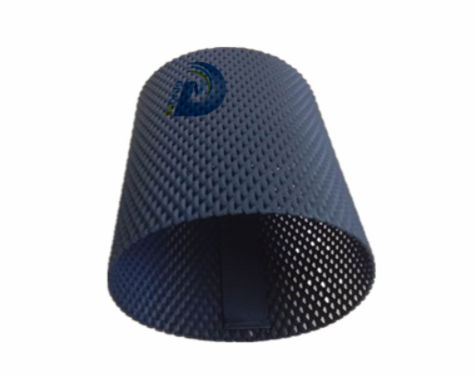Home / News / Characteristics and Structures of Lead Dioxide Electrode
Jun. 14, 2022
Lead dioxide electrode has the characteristics of low resistivity, stable chemical properties, good corrosion resistance, good electrical conductivity, and can pass large currents, which substantially improves the bonding power of the plating.
The new lead dioxide titanium anode is based on titanium material, and the titanium substrate is acid-etched and plated with a tin-antimony oxide base layer by the thermal decomposition method, and then plated with an α-PbO2 intermediate layer by an alkaline solution, and then a fluorine-containing β-PbO2 surface layer doped with an active metal and a high adsorption performance particle is produced by using an acidic composite plating solution, so as to obtain a new titanium-based lead dioxide electrode. The titanium-based PbO2 electrode made by this method has low price and long service life.

Widely used in the electrolytic preparation of various organic substances and in the process of sewage treatment and high-purity water preparation. pb02 has the advantages of superior conductivity, good reversibility of charging and discharging and low price, etc. It is widely used as lead-acid battery cathode, and the utilization rate of lead dioxide, the active material of lead-acid battery cathode, is still not high, generally not more than 50%. Oxygen separation potential is high, generally 1.75V (relative to the glycolic electrode), for the degradation of organic matter (COD) has a strong descending power.
The materials currently used as the base layer are mainly: platinum group metals and their oxides, tin-antimony oxides, iridium-tantalum composite oxide base layer, etc. Their properties are as follows.
(1) platinum group metals and their oxides: the base layer has good electrical conductivity and can greatly improve the bonding performance of the plating and the substrate.
(2) Tin-antimony oxide: The tin-antimony oxide layer made by the method of thermal decomposition is uniform and dense. With this base layer, it is difficult for the electrolyte to penetrate into the titanium surface, and the oxygen atoms or 02-. The diffusion of ions to the titanium substrate is also blocked, thus avoiding the generation of TiO2.
(3) Titanium-tantalum composite oxide base layer: This base layer has the characteristics of electrical conductivity, good corrosion resistance and small electrochemical activity. Even if the bottom layer is exposed during the electrolysis process, no electrolytic reaction will occur, so there is no problem of spalling of the plating caused by this.
PbO2 surface active layer is generally prepared by electrodeposition. It has α, β 2 crystal type, β-PbO2 corrosion resistance and electrical conductivity is better, usually used as the electrode surface active layer. But α-PbO2 bonding force is stronger, and its O-O atomic spacing between the "bottom layer" and β-PbO2, can play a buffer fusion role, reduce electrodeposition distortion, increase the affinity between the surface and the bottom layer. Therefore, in the plating process, α-PbO2 deposited under strong alkaline conditions first, followed by β-PbO2 deposited under acidic conditions, in order to improve the service life of the electrode.
1. Chromium plating in strongly acidic solutions such as chromic acid, hard chromium plating, and for manufacturing tin-free thin steel plates in the steel industry.
2. Chromate treatment. Steel plate surface treatment, metal products for chromate treatment.
3. Electrolysis to make inorganic compounds such as chromic acid, perchlorate and periodate. Purification of wastewater by electrolytic oxidation to bring chemical oxygen consumption (COD) and biological oxygen demand (BOD) to discharge standards.
4. Electrolytic oxidation for synthesis of organic compounds in acid washing electrolysis.
5. Electrolysis for ozone production requires electrode materials with high oxygen overpotential.
6. Electrolytic recovery and extraction of non-ferrous metals in strongly acidic solutions.
7. Waste water treatment. Purification of COD, BOD, and other organic compounds by electrolytic oxidation.
As a professional titanium electrode supplier, DiNoer can also design and produce plenty of high performance MMO Auxiliary Anode for Cathodic Protection, MMO Coated Titanium Anodes and Platinum Plated Titanium Anode with best price. Welcome to consult for detailed information and custom service!